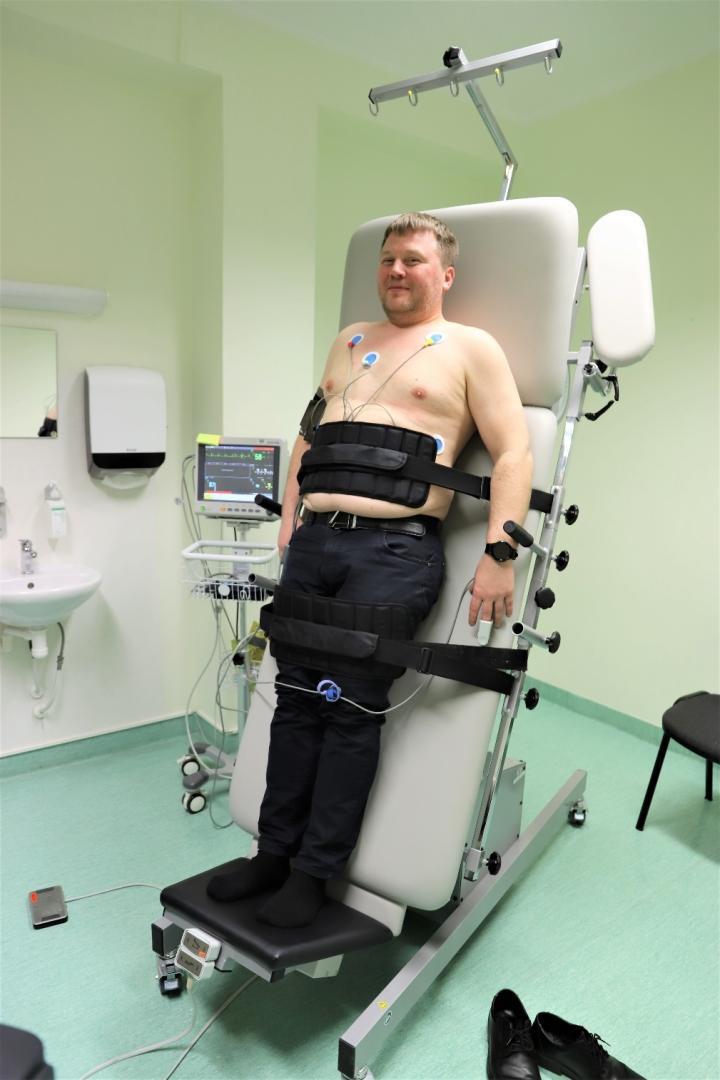Tilt test
The purpose of this patient information material is to introduce the nature of the tilt test and the role of the patient in it.
The tilt test is performed on a patient who has experienced fainting attacks of unknown cause, and the purpose of the test is to determine whether the fainting is related to a disorder of regulation between the vascular system and the nervous system due to the posture of the body.
The patient’s ability to stand for 25 minutes in a row is a prerequisite for conducting the study.
The examination takes place in the morning, after a light breakfast, and is carried out in a quiet and dim room. At first, the patient must lie on the examination table for 5 minutes. The hydraulic table with the patient is then lifted from a horizontal to a vertical position. The table is held at an angle of 70 degrees and this stage lasts 15–20 minutes. This is followed by a recovery step, with the table being lowered back to the horizontal position. The study takes a total of 45 minutes.
-
The tilting table has a footrest and the patient is secured to the examination table with safety belts, which ensures their complete safety.
-
The patient’s heart function is monitored throughout the examination and blood pressure is measured every 2 minutes.
-
Changes in the sense of well-being during the examination should be reported immediately.
The results of the examination will be sent electronically to your treating physician, where further treatment will take place.
If you have any questions about the tilt test, contact your treating physician or a nurse.
If you are unable to attend the examination at the agreed time or would like to change the time of the examination, please telephone 620 7417 and let them know.

ITK1280
Approved by the decision of the Medical and Nursing Care Quality Commission of Aktsiaselts Ida-Tallinna Keskhaigla on 27. August 2025 (Protocol No. 2.2-8/3-25)
 Terviseportaal
Terviseportaal